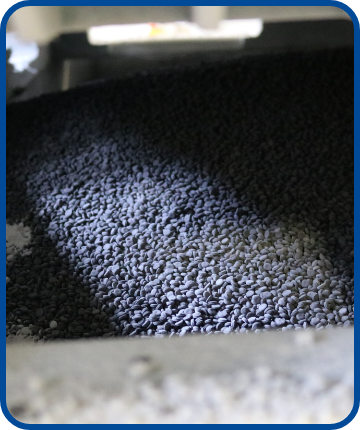Leading the Way in Radiation Protection
Powered by Xenolite®, Burlington Medical provides market-leading attenuation materials designed for superior durability, sustainability, and performance. Our extensive selection of flexible X-ray attenuation sheets supports a variety of medical applications, including radiation protection garments, shielding systems, and sterile scatter drapes.
Choose from standard lead, composite lead, or lead-free options. Every Xenolite product is meticulously crafted using our proprietary elastomer matrix and high-precision extrusion process, ensuring exceptional quality and reliability.

ADVANTAGES OF XENOLITE
OPTIMAL STRENGTH & DURABILITY
High elongation at break and superior tear resistance
BALANCE OF TOUGHNESS & FLEXIBILITY
Designed for durability and adapts to movement without compromising protection
ENHANCED WEAR COMFORT
Lightweight and ergonomic
for all-day use
PVC-FREE COMPOSITION
A safer, more sustainable choice
Lead-Free
Xenolite Strata 500
(IEC 2014-Compliant)
Xenolite Strata 500 delivers superior radiation attenuation, exceptional durability, and enhanced handlingcharacteristics—all while supporting Burlington Medical's commitment to sustainability with a PVC-free,lead-free design.
- Superior Lead-Free Protection - Maximum safety across the 50-150 kV range
- Extended Durability - Designed for long-term, reliable performance
- Unmatched Strength & Flexibility - Optimal balance of tensile strength and elongation
- Enhanced Value - Cost-effective over its lifespan
- Sustainable - PVC-free, recyclable, and fully reprocessable
- Lead-like Protection Without the Weight - Lighter, more comfortable shielding
Xenolite 300-AF
(ASTM-Compliant)
Our latest innovation in radiation protection, Xenolite 300-AF, is an ultra-lightweight, high-performance material offering exceptional attenuation, enhanced durability, and superior handling. It upholds Burlington Medical's commitment to sustainability—it's free from PVC, lead, and antimony.
- LEAD-FREE PROTECTION - High safety across the 60-110 kV range
- NON-TOXIC - Free from heavy metals, lead, and antimony
- ULTRA LIGHTWEIGHT - Among the lightest materials available
- EXTENDED DURABILITY - Built for long-term reliability
- UNMATCHED STRENGTH & FLEXIBILITY - Optimal balance of tensile strength and elongation
- ENHANCED VALUE - Cost-effective over its lifespan
- SUSTAINABLE - PVC-free, recyclable, and fully reprocessable
Lead Composite
Xenolite 200-T
(IEC 2014-Compliant)
Xenolite 200-T is a two-element composite that optimizes attenuation performance while reducing weightcompared to traditional lead. It also supports Burlington Medical's commitment to sustainability as it'sfully recyclable and reprocessable.
- High Lead-Composite Protection - Reliable shielding across the 60-110 kV range
- Extended Durability - Engineered for long-term reliability
- Unmatched Strength & Flexibility - Optimal balance of tensile strength and elongation
- Enhanced Value - Cost-effective over its lifespan
- Sustainable - PVC-free and fully reprocessable
- Midweight and Versatile - Ideal for applications where weight is not a primary concern
Xenolite 600-B3E
(ASTM-Compliant)
Xenolite 600-B3E offers a balanced solution for radiation protection, combining effective shielding, reducedweight, and cost-efficiency. It also upholds Burlington Medical's commitment to sustainability byrepurposing non-PVC materials.
- High Lead-Composite Protection - Reliable shielding across the 60-110 kV range
- Extended Durability - Designed for long-term reliability
- Unmatched Strength & Flexibility - Optimal balance of tensile strength and elongation
- Enhanced Value - Cost-effective over its lifespan
- Sustainable - PVC-free and fully reprocessable
- Midweight and Versatile - Ideal for applications where weight is not a primary concern
Traditional Lead
Xenolite 100-L
(IEC 2014-Compliant)
Xenolite 100-L is a traditional lead material, providing a low-cost, dependable solution for X-rayprotection.
- Superior Lead Protection - Maximum shielding across the 50-150 kV range
- Extended Durability - Designed for long-term reliability
- Unmatched Strength & Flexibility - Optimized balance of tensile strength and elongation
- Enhanced Value - Cost-effective over its lifespan
- Sustainable - PVC-free and fully reprocessable
- Heavy-Duty & Economical - Ideal for high-energy X-ray procedures (CT-assist, thorax)exceeding 120 kV.
Precision-Engineered Attenuation for Superior X-Ray Protection
Our attenuation materials are available in various lead (Pb) equivalencies, ranging from 0.125mm to 0.50mm. Attenuation rolls can be customized to specific requirements.
Every roll undergoes rigorous quality checks throughout production to ensure safety and performance.
Burlington has a strong commitment to quality assurance and a commitment to excellence. We rigorously test our materials to ASTM F2547-18 standards and IEC 61331-1:2014 (BBG*) standards, and our facilities are ISO 9001:2015 accredited.
Xenolite® is a registered trademark of Burlington Medical in the US.

